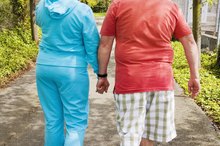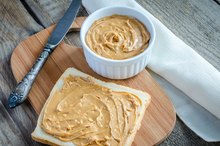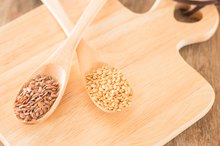What does fact checked mean?
At Healthfully, we strive to deliver objective content that is accurate and up-to-date. Our team periodically reviews articles in order to ensure content quality. The sources cited below consist of evidence from peer-reviewed journals, prominent medical organizations, academic associations, and government data.
The information contained on this site is for informational purposes only, and should not be used as a substitute for the advice of a professional health care provider. Please check with the appropriate physician regarding health questions and concerns. Although we strive to deliver accurate and up-to-date information, no guarantee to that effect is made.
Foods High in Chromium, Carbon, Phosphorus & Tryptophan
Chromium and phosphorus are two minerals essential to life. Tryptophan comes from protein foods 4. It is an essential amino acid, which means the body can't synthesize it, so it must be obtained from your diet. Carbon is found in nearly every food and provides energy to survive. Eating a variety of foods will help you obtain nutrients like these that you need for optimal health.
Chromium is a Trace Mineral
Chromium is a trace mineral -- needed in tiny amounts -- that is involved in carbohydrate, fat and protein metabolism. It also helps insulin, a hormone required for metabolism and storage of carbohydrate, to work better. Fruits, vegetables and some spices are good sources. Examples include:
- broccoli
- apples
- bananas
- green beans
- garlic
- basil
Whole-grain products and meats, such as turkey and beef, also contain chromium.
- Chromium is a trace mineral -- needed in tiny amounts -- that is involved in carbohydrate, fat and protein metabolism.
- It also helps insulin, a hormone required for metabolism and storage of carbohydrate, to work better.
Phosphorus is a Major Mineral
Foods Containing Carbon
Learn More
Tryptophan Comes From Proteins
Tryptophan is an essential amino acid used for growth, development and making serotonin. Foods high in tryptophan include mozzarella, cheddar and Parmesan cheeses. Other examples include red meat, eggs, chicken, turkey and fish such as:
- halibut
- salmon
- rock fish
- trout
Carbon, Chromium, Phosphorus & Tryptophan
Sources of Electrolytes
Learn More
All foods contain carbon. Only water does not. During metabolism, your body breaks the bonds between carbon molecules, releasing energy your cells can use. Some examples of foods that contain both the minerals chromium and phosphorus as well as the amino acid tryptophan include turkey sausage and whole-grain breads. It is important to focus on eating a variety of foods to ensure your diet has adequate amounts of chromium, phosphorus and tryptophan as well as other nutrients.
- During metabolism, your body breaks the bonds between carbon molecules, releasing energy your cells can use.
- It is important to focus on eating a variety of foods to ensure your diet has adequate amounts of chromium, phosphorus and tryptophan as well as other nutrients.
Related Articles
References
- Office of Dietary Supplements: Chromium
- Davita: Phosphorus and Chronic Kidney Disease
- Davita: Phosphorus in Foods: What to Know When You're on a Kidney Diet
- HealthAliciousNess: Top 10 Foods Highest in Tryptophan
- National Public Radio: Break a Carbon Bond and -- Presto! -- Civilization
- Whole Grains Council: Whole Grains: Good Mood Food!
- Hua Y, Clark S, Ren J, Sreejayan N. Molecular mechanisms of chromium in alleviating insulin resistance. J Nutr Biochem. 2012;23(4):313-9. doi:10.1016/j.jnutbio.2011.11.001
- Cerulli J, Grabe DW, Gauthier I, Malone M, Mcgoldrick MD. Chromium picolinate toxicity. Ann Pharmacother. 1998;32(4):428-31. doi:10.1345/aph.17327
- Navarro VJ, Khan I, Björnsson E, Seeff LB, Serrano J, Hoofnagle JH. Liver injury from herbal and dietary supplements. Hepatology. 2017;65(1):363-373. doi:10.1002/hep.28813
- Food and Drug Administration. Food labeling: revision of the nutrition and supplement fact labels. Published May 27, 2016.
- U.S. Food and Drug Administration. Chromium 4 mcg/mL chromic chloride injection, USP. Updated April 2002.
- Brownley KA, Von Holle A, Hamer RM, La Via M, Bulik CM. A double-blind, randomized pilot trial of chromium picolinate for binge eating disorder: results of the Binge Eating and Chromium (BEACh) study. J Psychosom Res. 2013;75(1):36-42. doi:10.1016/j.jpsychores.2013.03.092
- National Institutes of Health: Office of Dietary Supplements. Chromium. Updated July 9, 2019.
- Chromium: Dietary Supplement Fact Sheet. National Institutes of Health. Updated July 9, 2019.
- Iovieno N, Dalton ED, Fava M, Mischoulon D. Second-tier natural antidepressants: Review and critique. J Affect Disord. 2011;130(3):343-357. doi:10.1016/j.jad.2010.06.010
Writer Bio
Renee Thompson who received her bachelor of science from Purdue University in dietetics/nutrition, fitness, and health. She works as a registered dietitian for Community Hospitals providing diabetes education, weight loss education and other nutrition expertise.









